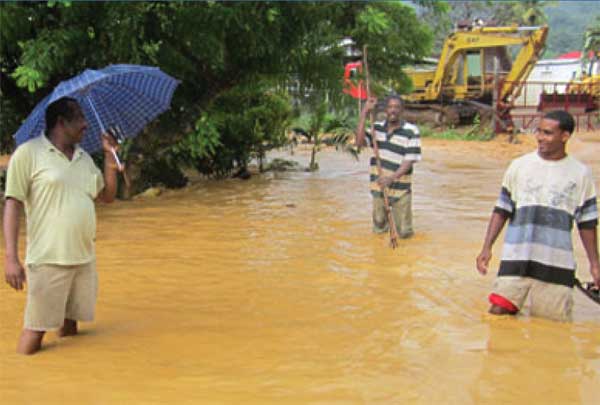 IETV supports the 1point5tostayalive campaign ahead of COP 21 scheduled for Paris in December 2015 – Part 9
IETV supports the 1point5tostayalive campaign ahead of COP 21 scheduled for Paris in December 2015 – Part 9
The United States, Europe, Taiwan and China, India, all experience a variety of extreme weather events, including hurricanes, flood, blizzards, and droughts. These events can lead to severe infrastructure damage and high rates of morbidity, another word for illness, and mortality another word for death.
Climate change is expected to increase the frequency and intensity of these events, including floods, droughts, and heat waves. The health impacts of these events can be severe, and include direct impacts such as injury, deaths, and mental health impacts, as well as indirect, such as population displacement and outbreaks of waterborne diseases.
Preparation has a significant impact on the outcomes of extreme weather events, as it can reduce illness and deaths, as well as lower economic costs associated with recovery. While some of these strategies can be costly, implementing them over time reduces their cost.
However, adaptation can be difficult in heavily affected areas where population growth will continue to increase in areas such as the U.S. Eastern seaboard that are vulnerable to storm surges and rising sea-levels.
More intense and more frequent precipitation from rainstorms that lead to flooding, increased exposure to toxic chemicals in runoff, waterborne diseases, and ecosystem changes through the loss of wetlands will lessen the quality of life for many, as will more intense and frequent hurricanes that result in death and injury, infrastructure damage, and increases in stress and anxiety in vulnerable populations
We can however take certain measures to reduce greenhouse gas emissions through changes in land use, transport, and energy production.
In this day of instant up-to-date information we can develop reliable early warning systems to help us prepare, usually with about five days to spare, which does not of course remove the need to always be prepared.
Long- term mitigation must include zoning and planning to avoid building in at-risk areas which might require that those in charge of development control must demonstrate backbone and learn to withstand pressure from powerful investors intent on building no matter what the potential risks might be.
It is never too late to try and repair the damage already done. Reinforcing the built environment against hazardous weather events is a sound investment that might protect properties that otherwise might collapse during the next severe hurricane.

Evacuation planning and awareness is essential. However, we need more than shelters for just a couple of days; we need long-term planning to take care of victims. We should not merely depend on friends and neighbours to step in once disaster strikes. In order to deal with emergencies we should develop strategies for linking health databases so that medical records of victims of accidents or natural catastrophies can be accessed instantaneously.
Improving the predictive power of modelling of health effects of extreme events such as droughts, wildfires, and floods, coupled with real-time monitoring and prospective assessment of weather, climate, geospatial, and exposure data in order to better characterize the health impacts of extreme weather events will help us to be better prepared to face up to weather-related disasters.
We must also find ways of evaluating and improving the effectiveness of health alert warning systems and other health risk communication tools. It is quite possible that by developing and validating techniques for downscaling global climate models we will be able to provide regional and local input into healthy early warning systems.
Cop 21 must succeed where others have failed. We must cap the rise in temperature at 1.5 degrees Celsius or we will perish, which is why we have adopted the motto “1point5tostayalive”: 1.5 to stay alive! Follow the video series on our Television channel.






